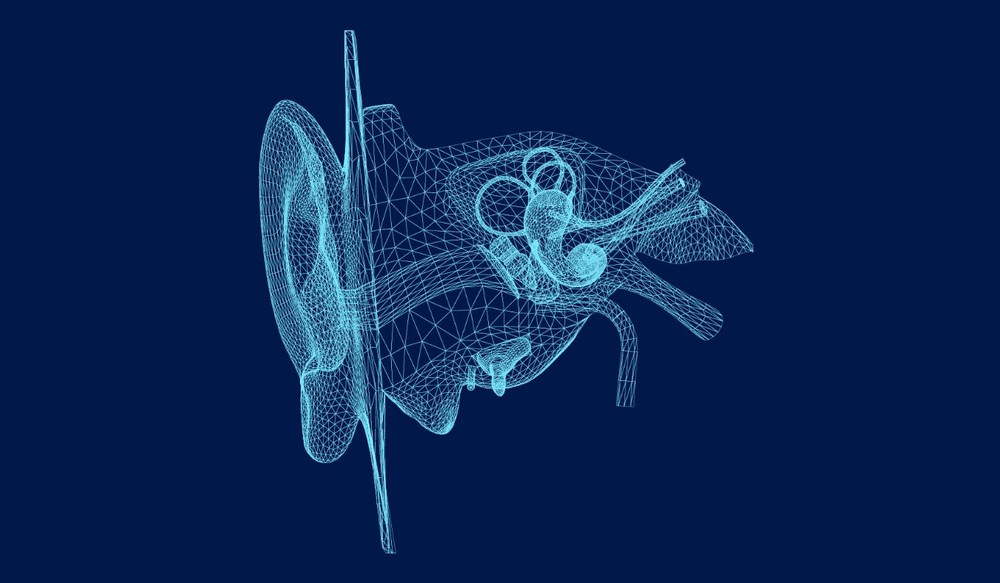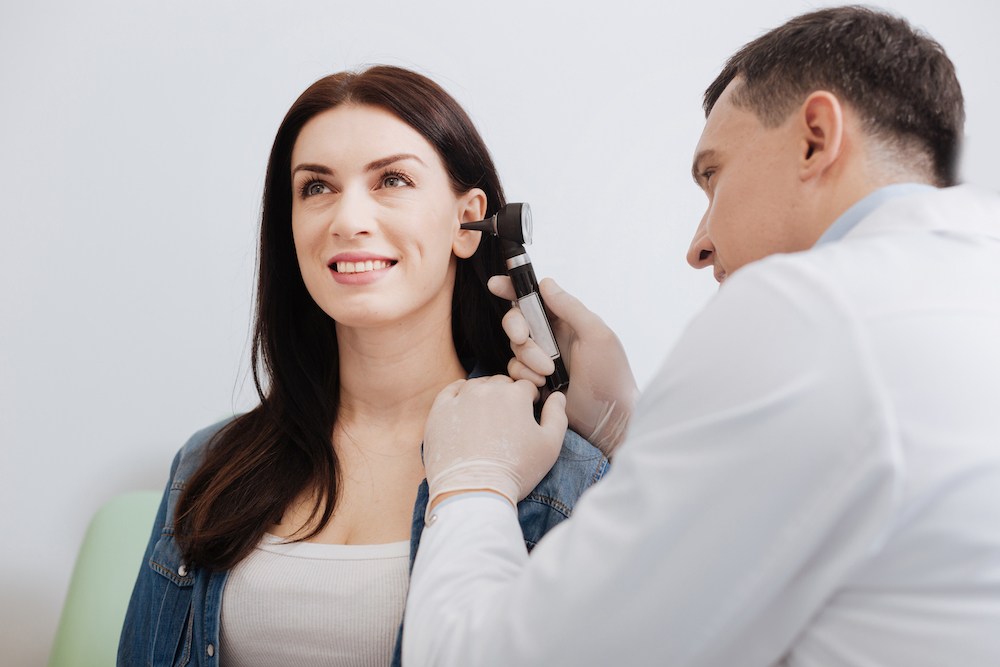The Connection Between Hearing Loss and Physical Activity
Physical activity plays a vital role in maintaining your overall health,

By: admin | April 24, 2025
Telehealth has changed how we access healthcare in recent years, bringing medical services directly to our homes through screens and internet connections. This shift has extended to hearing care, where audiology practices now offer remote options for assessment, consultation and ongoing support. For many people experiencing hearing difficulties, these virtual services remove barriers that once kept them from seeking help – whether it was distance to professionals, mobility challenges or simply fitting appointments into busy schedules.
When hearing problems first appear, many of us put off getting help. We might think the problem isn’t serious enough yet, or we struggle to find time for in-person appointments. This delay often allows hearing issues to worsen, affecting our relationships, work performance and overall well-being. Telehealth in audiology creates a more accessible path to early intervention, allowing you to connect with specialists sooner rather than later. This means potential hearing problems can be identified and addressed before they significantly impact your daily life, helping maintain the connections and activities that matter most to you.
Telehealth refers to the use of digital communication tools, like video calls, phone calls and online messaging, to provide healthcare services remotely. It’s designed to make healthcare more accessible, allowing patients to receive medical advice, consultations and even treatment without needing to visit a healthcare provider in person. This service can include a variety of healthcare services, such as mental health support, routine checkups, chronic condition management and even hearing healthcare. Telehealth offers the convenience of receiving care from the comfort of home, which can be especially beneficial for people with mobility issues, those living in remote areas, or anyone looking to avoid long waiting times.
Telehealth works through a variety of platforms that connect patients with healthcare professionals. Video calls are one of the most common forms of communication, allowing doctors, audiologists or therapists to interact directly with patients in real time, just like they would in an office. In some cases, patients may use specific devices, like hearing aids or blood pressure monitors, that transmit data to healthcare providers for analysis. These devices may be connected to the telehealth platform, ensuring that doctors receive accurate, up-to-date information about the patient’s condition. It’s important for patients to have access to the necessary technology, like a reliable internet connection, a camera and a microphone, to ensure a smooth consultation.
One of the major benefits of telehealth is its ability to offer flexibility and convenience. Instead of traveling to an office, patients can schedule consultations at times that fit into their schedules, whether it’s from their home, workplace or while traveling. This technology also increases the availability of specialists, allowing patients to connect with experts who may not be available in their local area.
The use of telehealth has grown significantly in recent years, especially in response to global challenges like the pandemic. When it becomes difficult to visit an audiologist in person, telehealth offers a practical way to continue addressing hearing concerns while staying safe. This remote care ensures that you can stay on top of your hearing health without the need for in-person visits.
Telehealth also reflects a shift in how healthcare is being delivered. It’s no longer just a temporary solution but a key part of how hearing health services are being offered. As more people turn to digital healthcare, the increasing reliance on telehealth highlights its growing role in supporting hearing health and shows how it’s becoming an essential tool in providing accessible care for many.
Telehealth is breaking down barriers in hearing health care by improving accessibility. It’s no longer necessary for you to travel long distances or arrange transportation to visit an audiologist. Now, with just a few clicks on your computer or smartphone, you can connect with your specialist from the comfort of your home.
Telehealth has simplified the process of receiving hearing care by offering services such as remote consultations and digital adjustments of hearing aids. These services include scheduling appointments at flexible times that suit you, having real-time conversations with audiologists via video calls, receiving immediate feedback and assistance during virtual appointments, and getting your hearing aids adjusted remotely through an app. This digital approach not only saves time but also ensures that quality care is just a call or click away.
Technology continues to evolve, especially in the field of hearing health. So, how does this progress impact the way your hearing aids are adjusted? The advent of telehealth has brought about significant advancements in hearing aid adjustments. Previously, fine-tuning your hearing aids would require an in-person visit to an audiologist. Now, these adjustments can be done digitally via telehealth services. This means you can have your devices tweaked and optimized without leaving your home.
This is possible through specialized apps that connect your hearing aids to a remote platform accessed by your specialist. The professional can then make necessary changes based on feedback from you and data collected by the app itself. This process allows for real-time adjustments, enhancing both the effectiveness and convenience of managing your hearing health.
In a digital setting, it’s important for both you and your audiologist to remain proactive in ensuring effective communication and mutual understanding. Clear instructions on using digital tools for consultations or adjustments, regular check-ins to assess your comfort with these new methods and consistent feedback are all vital elements in upholding high-quality care.
Additionally, taking advantage of the convenience telehealth offers requires a commitment to preparation. Before your virtual consultation, make sure you have a reliable internet connection, the necessary devices and a quiet, comfortable space where you can fully engage. Your audiologist may also guide you through using remote tools like hearing aid adjustments or diagnostic apps. By ensuring both parties are prepared and informed, telehealth consultations can be just as effective as in-person visits, offering flexibility without compromising the quality of care.
With personal information being shared online, it’s important to ensure that these details remain confidential and secure. When it comes to telehealth, stringent measures are taken to protect your data. Encrypted connections are used for all communications between you and your audiologist during remote consultations or when adjusting your hearing aids digitally. This means that any information exchanged is coded in a way that makes it difficult for unauthorized individuals to access.
In addition, reputable telehealth platforms comply with healthcare privacy laws like the Health Insurance Portability and Accountability Act (HIPAA). These laws set strict standards for protecting patient data and impose severe penalties for violations.
However, as a user of these services, you also have a role to play in protecting your information. It’s important to use secure networks when accessing telehealth services and keep your login credentials confidential. Through collective efforts from both healthcare providers and patients like you, we can ensure a safe environment for virtual hearing care without compromising on privacy.
While telehealth offers many advantages, there are some challenges to consider. One potential issue is technology-related, as both you and your audiologist need reliable internet connections and comfortable access to digital devices. Sometimes, technical difficulties can interrupt sessions or make communication a little more challenging than it would be in person. However, most telehealth platforms are designed with user-friendliness in mind, and your audiologist can guide you through any setup issues, ensuring a smoother experience moving forward.
Another consideration is the limited ability for in-person physical assessments. While telehealth can be highly effective for routine consultations and adjustments, there are some aspects of hearing health that may require a hands-on approach, such as hearing tests or ear cleanings. In such cases, you may need to visit your audiologist in person for more thorough evaluations. Despite this, telehealth remains an excellent option for ongoing care, offering flexibility and accessibility, especially for follow-up appointments or routine check-ins.
The world of hearing health is evolving, with telehealth playing a significant role in this transformation. This brings us to an important aspect of your hearing care journey – preparing for your upcoming virtual hearing check-up. Just like any new experience, getting ready for a virtual appointment might seem overwhelming at first. But don’t worry! It’s all about understanding what to expect and how you can prepare yourself. Here are some tips to help you get started.
Firstly, ensure that your device – whether it’s a computer or smartphone – is fully charged and has a stable internet connection. This will prevent any technical disruptions during your appointment. Secondly, find a quiet place where you can talk openly about your hearing concerns without distractions or interruptions.
Lastly, remember that even though the format of the consultation has changed, its purpose remains the same – to address your hearing needs effectively. So be prepared with any questions or concerns you might have about your hearing health.
Telehealth has made it easier for people to access hearing care without the need to leave home. For those with busy schedules, mobility challenges or living in remote areas, this shift in how care is delivered provides a convenient solution. Instead of worrying about fitting appointments into an already full day or traveling long distances, you can have consultations, follow-ups and even assessments from the comfort of your own space. This greater access to care plays an important role in addressing hearing issues early, when intervention is most effective.
If you’re noticing signs of hearing loss, it’s important to take action sooner rather than later. Untreated hearing issues can affect your relationships, work and overall quality of life. Seeking help allows you to address the problem before it becomes more challenging. By scheduling an appointment with au audiologist, you can discuss your symptoms, get a proper evaluation and explore treatment options that are best suited for you. If you’re in Tupelo, MS, you can contact the Audiology Center at ENT Physicians at (662) 269-1312 to set up a consultation.

Physical activity plays a vital role in maintaining your overall health,
By: admin | November 18, 2025

Your hearing affects more aspects of your daily life than you might
By: admin | September 24, 2025

Telehealth has changed how we access healthcare in recent years, bringing
By: admin | April 24, 2025
